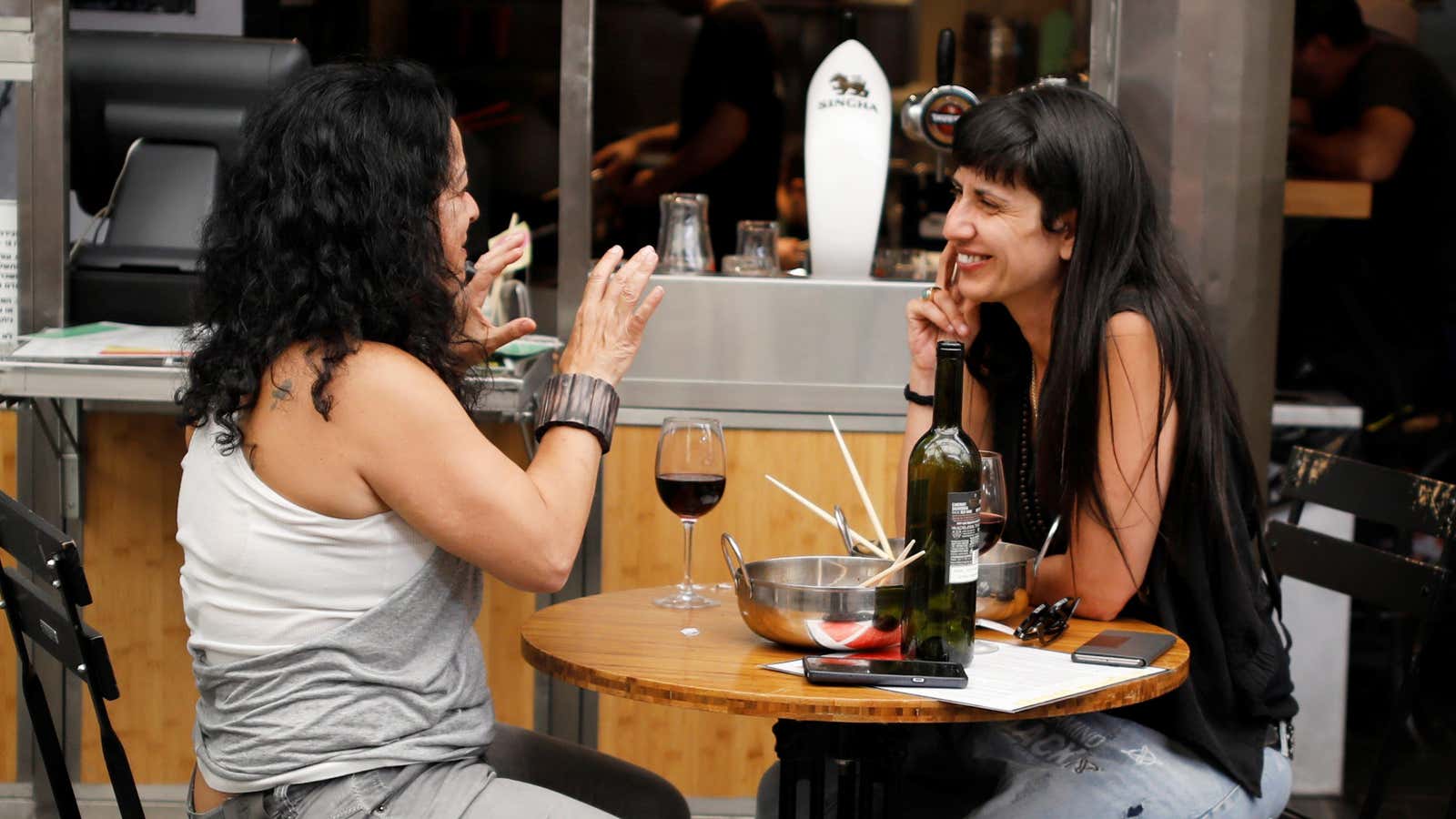It’s a well-documented paradox of modern relationships: Our digital tools allow us to connect in ways that feel both intimate and distant. We can be reached at all times and across great distances, but the ties that bind us are superficial.
Quick updates (even the occasional humblebrag) are better than radio silence when the people we care about are geographically scattered and trapped in the “cult of busy”—but they don’t actually tell the real stories of our lives. In fact, our storytelling skills seem to be atrophying.
Too often, when we finally get to spend quality time with friends and family, we find ourselves suddenly out of material. After the obligatory exchange of updates, then what? The nuggets that get a lot of “likes” online often fall flat when told verbally; dinner table conversation dries up; and everyone feels dissatisfied and ill-informed about each other.
This is partly because the anecdote is in ascendency. Social media has made us masters of the pithy scene, stalkers for quick cuts of dialogue. Sherry Turkle, a psychologist and professor at MIT who studies technology and human behavior, sees this phenomenon as part of a ”flight from conversation,” which has left us with fewer opportunities to hone our skills for self-reflection. In a 2012 New York Times op-ed, she wrote:
These days, social media continually asks us what’s on our mind, but we have little motivation to say something truly self-reflective. Self-reflection in conversation requires trust. It’s hard to do anything with 3,000 Facebook friends except connect.
We asked for some advice on telling real, compelling stories—the kind that keep an evening moving and build stronger bonds—from Maggie Cino, a senior story producer for the renowned Moth storytelling series, in which people tell their own stories on stage.
The thing is, Cino says, sometimes people think they’re telling a story, but they’re really just telling anecdotes. The difference is crucial.
“Anecdotes just relate facts,” Cino explains. “An anecdote is, ‘This thing happened: I dropped my kid off at school this morning; it was pouring rain; and we were late; and I got soaked.’ The problem with that at a dinner party is there’s not a lot of room for someone to take that somewhere.”
A story, on the other hand, “is about letting us know that things started one way and ended a different way,” she says. Picking up from the anecdote above, it might be as simple as ending with, “but I found a coffee shop near the school, I spent an hour by myself, and I calmed down and felt less stressed.” Cino admits that’s not a great story (she made it up on the spot), but at least it creates space. It could be enough to elicit similar tales from friends.
For another example, this is an anecdote:
And this feels more like a story that would trigger conversations:
At the Moth, Cino explains, producers coach the storytellers, helping them build stories out by looking for the peaks and valleys in the narrative, and zeroing in on telling details that give the audience more context and deeper insight into who they are.
To construct a decent dinner party story of your own, Cino suggests thinking about the incident you often feel compelled to describe to people, or that friends ask you to share again and again, and give it extra thought. Draw out the anecdote, and find its meaning. Ira Glass, host of the storytelling US radio show This American Life, calls this layer the “moment of reflection.” It’s the “Here’s why I’m wasting your time with all this,” he says. A good story offers both the enticing anecdotes and the insight.
Cino warns her performers not to peacock, because people often won’t respond to showing off. “You have to allow people to connect with your humanity,” says Cino, so look for stories that show some vulnerability. “Even in a high-stakes dinner party situation, don’t be afraid to let yourself look a little bit silly,” she suggests. “It may not be the best time for your most serious story, but letting a little crack in will break the ice and start conversations.”
While it’s a good idea to tell stories that offer insights, don’t shy away from ambiguity. Stories are most memorable when they don’t end with a platitude. And the best stories peel back some layers and take you to strange or unexpected places.
As the philosopher Todd May recently opined in a New York Times column, “If we reflect on the stories we tell about ourselves, both to others and to ourselves, we may well find out things about who we are that complicate the view we would prefer to be identified with.”
Share that, and you have a real story.
